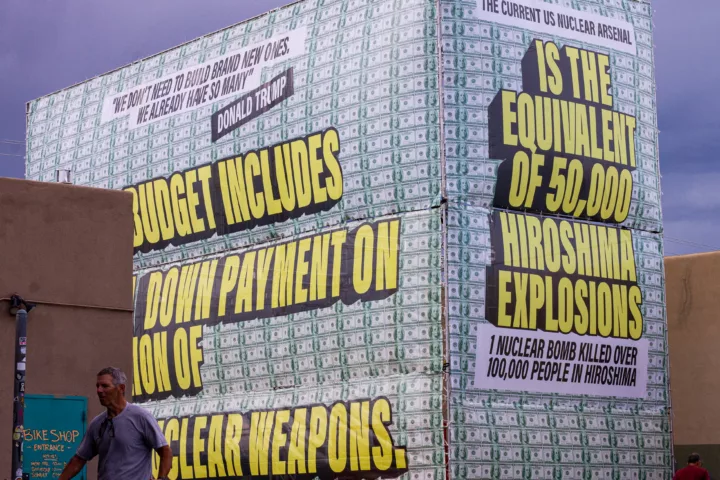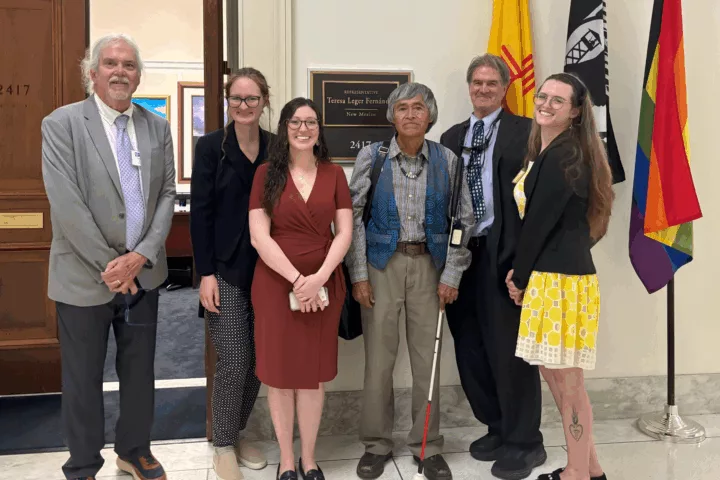On September 30, United States District Court Judge Mary Geiger Lewis ruled that the United States Department of Energy (“DOE”) and its semi-autonomous nuclear weapons agency, the National Nuclear Security Administration (“NNSA”), violated the National Environmental Policy Act (“NEPA”) by failing to properly consider alternatives before proceeding with their plan to produce plutonium pits, a critical component of nuclear weapons, at the Los Alamos National Laboratory (“LANL”) in New Mexico and, for the first time ever, at the Savannah River Site (“SRS”) in South Carolina.
The Court found that the plan’s purpose had fundamentally changed from NNSA’s earlier analyses which had not considered simultaneous pit production at two sites. These changes necessitated a reevaluation of alternatives, including site alternatives, which Defendants failed to undertake prior to moving forward while spending tens of billions of taxpayers’ dollars. Therefore, the Court entered judgment in favor of Plaintiffs, the nonprofit public interest groups Savannah River Site Watch, Nuclear Water New Mexico and Tri-Valley Communities Against a Radioactive Environment (CAREs); the Gullah/Geechee Sea Island Coalition; and Tom Clements as an individual plaintiff.
As a result of this ruling, the Defendants are required to newly assess pit production at a nation-wide programmatic level which will mean undertaking a thorough analysis of the impacts of pit production at DOE sites throughout the United States, including radioactive waste generation and disposal. Under the National Environmental Policy Act (NEPA), this will provide the opportunity for public scrutiny of and formal comment on their assessments.
As background, plutonium pits are the fissile cores of nuclear weapons. No future pit production is to maintain the safety and reliability of the existing, extensively tested nuclear weapons stockpile. Instead, future production is for speculative new-design nuclear weapons that can’t be tested because of an international testing moratorium, or alternatively could prompt the U.S. to resume full-scale testing, which would have serious proliferation consequences. Moreover, independent experts have found that plutonium pits have reliable lifetimes of at least 100 years (their average age is now around 42). At least 15,000 pits are already stored. Expanded plutonium pit production will cost taxpayers more than $60 billion over the next thirty years. However, the independent Government Accountability Office has reported that the NNSA has no credible cost estimates or “Integrated Master Schedule” between the two production sites.
Ben Cunningham, an attorney with the South Carolina Environment Law Project (SCELP), who represents the Plaintiffs, said the following: “This is a significant victory that will ensure NEPA’s goal of public participation is satisfied. Public scrutiny is especially important because the activities at issue here, by their very nature, result in the production of dangerous weapons and extensive amounts of toxic and radioactive waste. I hope the public will seize the upcoming opportunity to review and comment on the federal agencies’ assessment.”
“Tenk GAWD fa disya! Native Gullah/Geechees, including the Gullah/Geechee Fishing Association and Gullah/Geechee Sea Island Coalition members, rely on safe and healthy water in order to sustain ourselves and our community. Therefore, it is critical that the public is fully aware of any and all potential negative impacts that projects will have on critical resources such as our water supplies and water bodies. So, we are thankful that the judge ruled in our favor so that NEPA is adhered to. The environmental resources of South Carolina are critical to our state which is considered a place of “beautiful places and smiling faces.” The Gullah/Geechee family is definitely smiling as a result of this ruling!” said Queen Quet, Chieftess of the Gullah Geechee Nation.
“The judge’s ruling is a notable victory for the main argument in our lawsuit – that the NNSA’s NEPA analysis on plutonium pit production was inadequate, and now a Programmatic Environmental Impact Statement (PEIS) must be prepared that reviews DOE-wide impacts of plutonium pit production and associated radioactive waste disposal,” said Tom Clements, director of Savannah River Site Watch in Columbia, SC. “The design and construction work on the proposed SRS pit plant should be put on hold until the PEIS has been finalized,” added Clements.
Jay Coghlan, Executive Director of Nuclear Watch New Mexico stated, “We plaintiffs are exceedingly pleased that the Court has ruled in favor of our efforts to make the government comply with the law of the land. The DOE and NNSA have been on the GAO’s ‘High Risk List’ for project mismanagement and cost overruns for more than 30 years. Nevertheless, these agencies think they can proceed with their most expensive and complex project ever without required public analyses and credible cost estimates. Public scrutiny and formal comment under the National Environmental Policy Act have proven time and again to improve public safety and save taxpayers’ money. A nation-wide programmatic environmental impact statement on expanded plutonium pit production will hold DOE and NNSA accountable for just that.”
“Most of these plaintiffs commented extensively during the public comment processes on the DOE/NNSA environmental reviews of their plans to build new plutonium bomb cores for nuclear weapons at both Savannah River Site and Los Alamos National Laboratory. In our comments, it was repeatedly stressed that the agency violated the law by failing to take a hard look at alternatives for this ‘two-site’ plan,” said Scott Yundt, Executive Director at Plaintiff organization Tri-Valley CAREs, in Livermore, CA. “Additionally, commenters pointed out the lack of inclusion in the environmental review of the other affected sites involved in the plan, chief among them Lawrence Livermore National Laboratory and the Waste Isolation Pilot Plant, where the scope of work and the corresponding impacts was largely left out of the analysis and, again, no alternatives were offered or analyzed as required by NEPA. The judge saw these violations clearly and ordered agencies do the analysis that should have been done at the outset. This is a victory for public transparency, and hopefully will result in alternative proposals that are more protective of the environment and affected communities around these sites.”
Court “Opinion and Order,” https://nukewatch.org/srs-final-order-9-30-24/
Court “Judgment in a Civil Action,” https://nukewatch.org/srs-judgment-9-30-24/
Court “Memorandum Opinion And Order Granting In Part And Deeming As Moot In Part…”
https://nukewatch.org/srs-order-mot-complete-record-9-30-24/
This press release will be available at https://nukewatch.org/court-rules-u-s-nuclear-weapons-production-plan-violates-federal-law
# # #
The South Carolina Environmental Law Project is a nonprofit public interest law firm. We use our legal expertise to protect land, water and communities across South Carolina. Learn more at www.scelp.org.
Savannah River Site Watch, a non-profit public interest organization in Columbia, South Carolina, monitors nuclear weapons production and clean-up activities at SRS. https://srswatch.org/
Through comprehensive research, public education and effective citizen action, Nuclear Watch New Mexico seeks to promote safety and environmental protection at regional nuclear facilities; mission diversification away from nuclear weapons programs; greater accountability and cleanup in the nation-wide nuclear weapons complex; and consistent U.S. leadership toward a world free of nuclear weapons. https://nukewatch.org/
Tri-Valley CAREs (Communities Against a Radioactive Environment) is a 501(C)3 non-profit in Livermore, CA that monitors the activities of Lawrence Livermore National Laboratory, one of two locations that develops all US nuclear bombs and warheads. Learn more at www.trivalleycares.org
The Gullah/Geechee Sea Island Coalition advocates for the human, land and water rights of all Gullah/Geechee people around the world; promotes and participates in the preservation of Gullah/Geechee history, heritage, culture, and language; works toward Sea Island land re-acquisition and maintenance; and celebrates Gullah/Geechee culture through artistic and educational means electronically and via “grassroots scholarship.” https://gullahgeecheenation.com/


